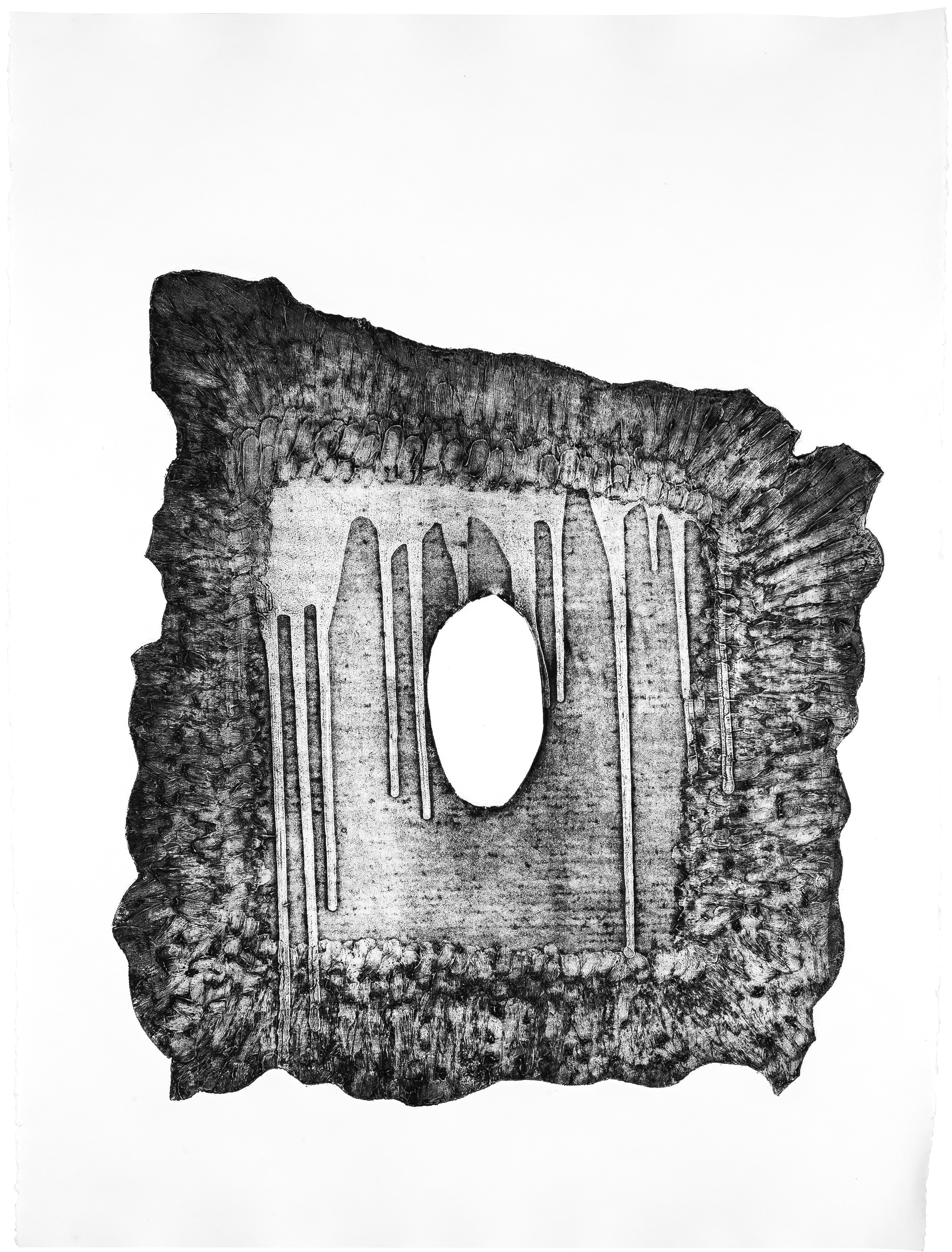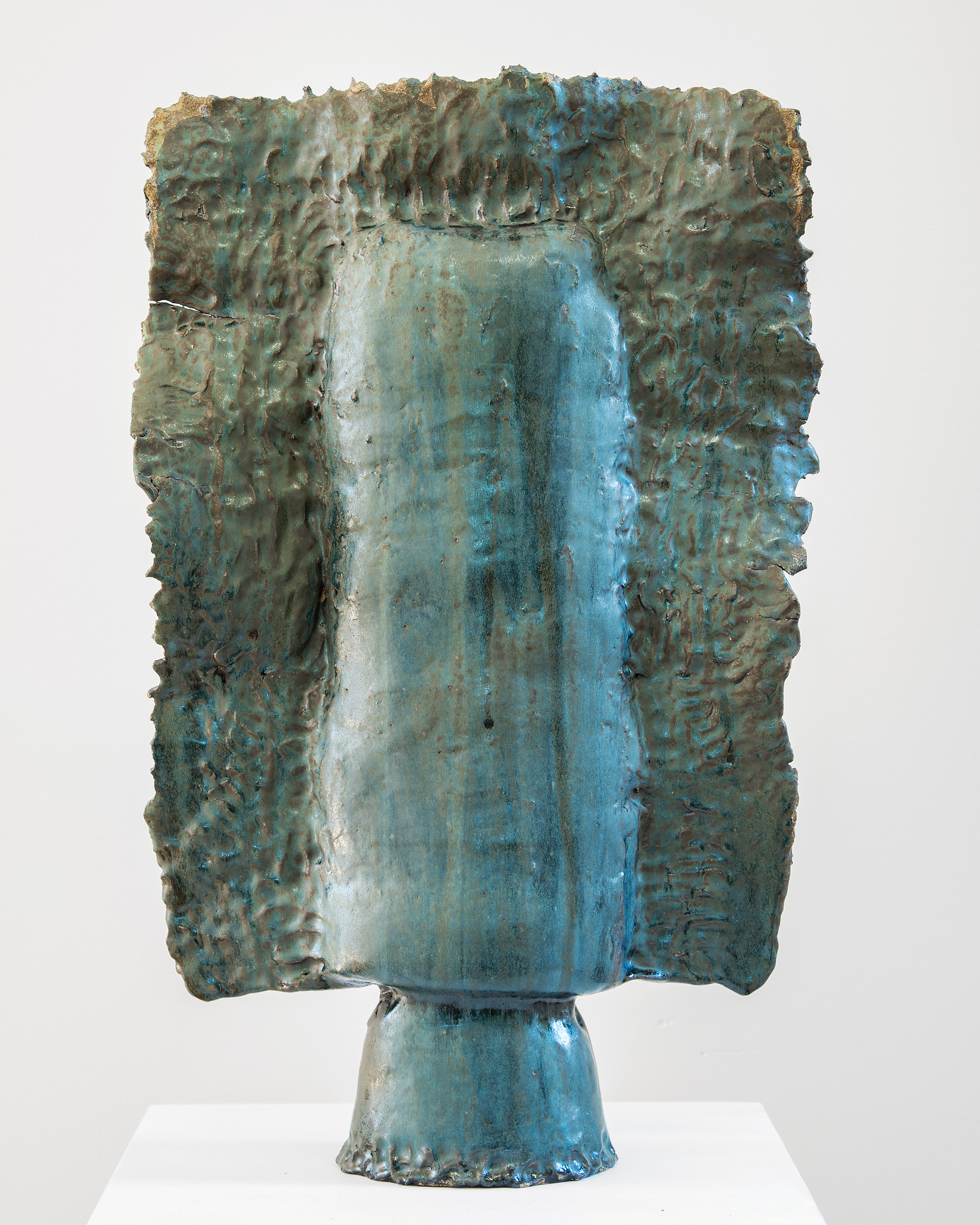

Marjorie gathers ash from her wood stove and labels it by season. She crushes wine bottles for glass and uses gemstones her mother collected in North Carolina. She constructs forms out of clay, then makes charcoal rubbings of them, finding new ways of seeing and interpreting the work.
Marjorie Dial is an artist and writer based in Portland, OR. She was born in Columbia, SC, and earned a BA from Yale University in 1994 and an MFA in Craft from Oregon College of Art and Craft (OCAC) in 2019. Dial’s multidisciplinary practice consists of sculpture, writing, and printmaking, and her collaboration with various materials is integral to her making.
Camilla Szabo: You talk about feeling “unprogrammed” growing up spending summers in the Cowee Mountains in South Carolina, immersed in play and the wildness of the woods. Do you see a correlation between your childhood and your draw to such a malleable, imperfect, and ultimately free-form material like clay? Is there a connection between your childhood and your desire to create objects that act as vessels—be it to the natural world, a spiritual calling or quest, or an inner child?
Marjorie Dial: Yes, absolutely. There’s a direct link between that lack of inhibition I felt as a child and the freedom I found in clay. Being in the studio is a free space—there is an element of play and a profound strangeness. I protect it fiercely and have worked to facilitate and offer this kind of space to artists through the residency I founded in North Carolina called Township10.
As a kid, I spent summers wandering the woods, burying stolen trinkets from my house, and writing songs in the backs of cookbooks. The boundary between inner world and outer world was porous. Working with materials reactivates that permeability. It lets me follow instinct, gesture, and improvisation. I’m not trying to recover my childhood or inner child in art practice. It is more a full encounter with that time, like an accordion fold that presses my present up against childhood quite literally.

CS: The ability of clay forms to expand beyond the physical world to convey something of interior or interpersonal life is a recurring theme in your work. Can you talk about how these ideas manifest for you?
MD: For me, the act of making is a collaboration between my inner life and the material in front of me. My interior sources are closely held—I don’t offer them up fully. Tim Ingold, the British anthropologist, writes about making as points of convergence between the flow of human consciousness and the flow of materials. This resonates with how I work in the studio—interior life intertwining with clay, ash, and ink.
My work is often cyclical. I tend to operate on that edge between vulnerability and containment. I draw from materials that feel urgent or hard to articulate—desire, fear, intimacy—and structure them within recurring forms. Over time, I’ve developed a lexicon of vessels: transmitters, receivers, warnings, storage vessels. They act as carriers, as communicators. It took some time, but I now feel comfortable in the knowledge that the work is self-sustaining and leads to the next or returns.
A turning point was my installation Sky Inside, on Sauvie Island. It was in a broken-down concrete building with no roof—just bare walls and water channels. I started to think of the structure as a kind of circuit and placed large ceramic vessels in formation, like a communicative grid. It helped me realize that my work is not just about making objects—it’s about creating conditions for presence, for transmission.
CS: What does it mean for material objects to harness ephemeral—or fleeting—emotions, desires, or impulses? How can ritual vessels become conscious through imbued meaning?
MD: This is one of the core reasons I am drawn to clay. The ceramic vessel has such a long and varied history, well-documented in the archeological record—for commemoration, for storage, for decoration, and on. What holds my attention is the ritual vessel: an object made to speak from our humanity. Vessels for protection, invocation, mourning, offering. That lineage speaks to me.
Two specific examples that have influenced me: Mimbres bowls from the peoples of the Mimbres Valley of New Mexico from the ninth to the twelfth century, which were pierced and buried over the faces of the dead, and Aramaic spell bowls—ceramic pieces inscribed with protective text, then placed upside down under the threshold of a home. There’s power in that act of making—not just the object, but what the object is asked to do. There is this theory in linguistics called the illocutionary act, where to say something is to do it. Like “I forgive you.” Or “I promise.” The act of saying makes it so. I think making objects can be like that too—a kind of material speech act. You create form, it is received, and throughout that process meaning is activated.
CS: How much is your process about the act of making versus the final outcome? What happens to a piece once it's been completed?
MD: My process is centered on the act of making. This is really where I believe the power and agency of art lives. The entanglement with materials and meaning in the studio is what fuels my return to the studio over and over, despite inevitable failures and frustrations and doubts.
I’ve noticed that the way I work—moving between different forms—keeps me destabilized. I don’t want to become efficient, or perfect, or didactic (god forbid). My recent show When you are gone taught me a lot about this—I made large-scale slab wall panels for the first time, developed new glazes that were unpredictable, and melted raw materials (glass, crushed rocks, gemstones) onto the surfaces at varying temperatures.
Once I finish a body of work, I don’t show everything. I photograph the work, move it around, do rubbings off it in charcoal—try to see it differently. Sometimes this leads to another iteration. There’s a feeling of relief when a piece leaves the studio. I think of it like writing music—once it’s done, it’s meant to be played and have its own trajectory.
.JPG)
CS: What does your work teach you?
MD: Honestly, it taught me how to stay. Before I found clay, I had a hard time being in my body or in the moment. I felt like I was skimming the surface of things. But when I’m making, I drop in. I listen differently. I move differently. It’s a way of being in relation. At a fundamental level, making has taught me that communication and change is possible. I think I felt really alone and shut down and disappointed in my before-times. Making gave me a language, something embodied that makes space for urgency and ambiguity and resistance to the messed-up collapsing world.
The work also keeps me humble. Ceramics in particular—it doesn’t let you get too confident. You can spend weeks on something and lose it in the kiln. Or the glaze cracks in a way you didn’t expect. You have to adapt. You have to start again. That kind of failure has schooled me.
And then there’s the community part. Sharing work, receiving feedback, hearing from someone who connected with a piece—that’s been incredibly meaningful. It reminds me that the work doesn’t end with me. That’s actually one of the most moving parts: when someone tells me they saw themselves in something I made. It’s like the object becomes a bridge. This brings me back to the topic of agency. Making has taught me that communication is possible at a deeper frequency.
CS: Do you see yourself expanding into other mediums? Are there other materials that speak to you?
MD: Yes—I also work in printmaking. That grew out of the sculpture, actually. I started tracing the shadows of pieces during graduate school at OCAC, doing rubbings off their surfaces, and then those gestures became their own body of work. I use intaglio, pochoir, collagraph—whatever lets me translate the dimensional onto paper and then sometimes back again.
I like the back-and-forth between two-dimensional and three-dimensional. It helps me see the work from new angles. And it slows me down. There’s an intimacy and immediacy in printmaking.
And—I’ve never really said this out loud—but I’m dying to work with hot glass someday. There’s something about molten glass being poured into molds that calls to me—the clarity, the heat. It feels like the cousin of clay that went off to live a more dramatic life. I’d love to get to know it better.